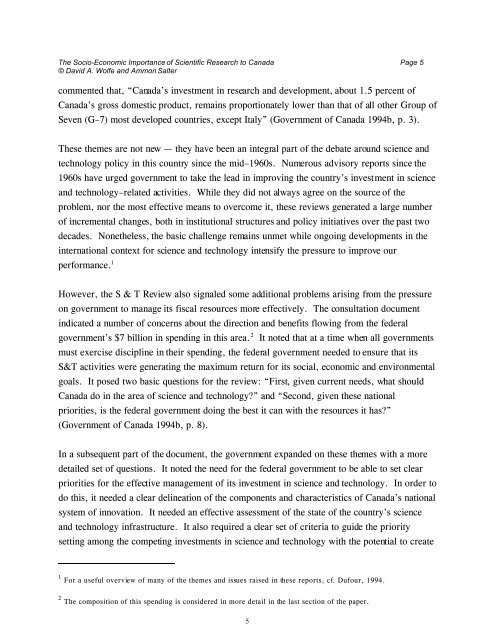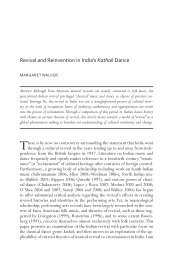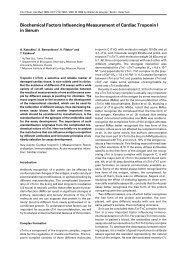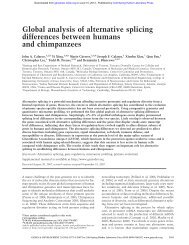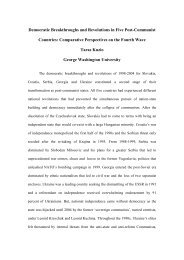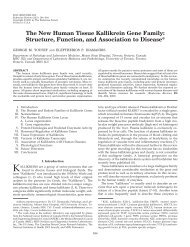The Socio-Economic Importance of Scientific Research To Canada
The Socio-Economic Importance of Scientific Research To Canada
The Socio-Economic Importance of Scientific Research To Canada
Create successful ePaper yourself
Turn your PDF publications into a flip-book with our unique Google optimized e-Paper software.
<strong>The</strong> <strong>Socio</strong>-<strong>Economic</strong> <strong>Importance</strong> <strong>of</strong> <strong>Scientific</strong> <strong>Research</strong> to <strong>Canada</strong> Page 5© David A. Wolfe and Ammon Saltercommented that, “<strong>Canada</strong>’s investment in research and development, about 1.5 percent <strong>of</strong><strong>Canada</strong>’s gross domestic product, remains proportionately lower than that <strong>of</strong> all other Group <strong>of</strong>Seven (G–7) most developed countries, except Italy” (Government <strong>of</strong> <strong>Canada</strong> 1994b, p. 3).<strong>The</strong>se themes are not new — they have been an integral part <strong>of</strong> the debate around science andtechnology policy in this country since the mid–1960s. Numerous advisory reports since the1960s have urged government to take the lead in improving the country’s investment in scienceand technology–related activities. While they did not always agree on the source <strong>of</strong> theproblem, nor the most effective means to overcome it, these reviews generated a large number<strong>of</strong> incremental changes, both in institutional structures and policy initiatives over the past twodecades. Nonetheless, the basic challenge remains unmet while ongoing developments in theinternational context for science and technology intensify the pressure to improve ourperformance. 1However, the S & T Review also signaled some additional problems arising from the pressureon government to manage its fiscal resources more effectively. <strong>The</strong> consultation documentindicated a number <strong>of</strong> concerns about the direction and benefits flowing from the federalgovernment’s $7 billion in spending in this area. 2 It noted that at a time when all governmentsmust exercise discipline in their spending, the federal government needed to ensure that itsS&T activities were generating the maximum return for its social, economic and environmentalgoals. It posed two basic questions for the review: “First, given current needs, what should<strong>Canada</strong> do in the area <strong>of</strong> science and technology?” and “Second, given these nationalpriorities, is the federal government doing the best it can with the resources it has?”(Government <strong>of</strong> <strong>Canada</strong> 1994b, p. 8).In a subsequent part <strong>of</strong> the document, the government expanded on these themes with a moredetailed set <strong>of</strong> questions. It noted the need for the federal government to be able to set clearpriorities for the effective management <strong>of</strong> its investment in science and technology. In order todo this, it needed a clear delineation <strong>of</strong> the components and characteristics <strong>of</strong> <strong>Canada</strong>’s nationalsystem <strong>of</strong> innovation. It needed an effective assessment <strong>of</strong> the state <strong>of</strong> the country’s scienceand technology infrastructure. It also required a clear set <strong>of</strong> criteria to guide the prioritysetting among the competing investments in science and technology with the potential to create1For a useful overview <strong>of</strong> many <strong>of</strong> the themes and issues raised in these reports, cf. Dufour, 1994.2<strong>The</strong> composition <strong>of</strong> this spending is considered in more detail in the last section <strong>of</strong> the paper.5


